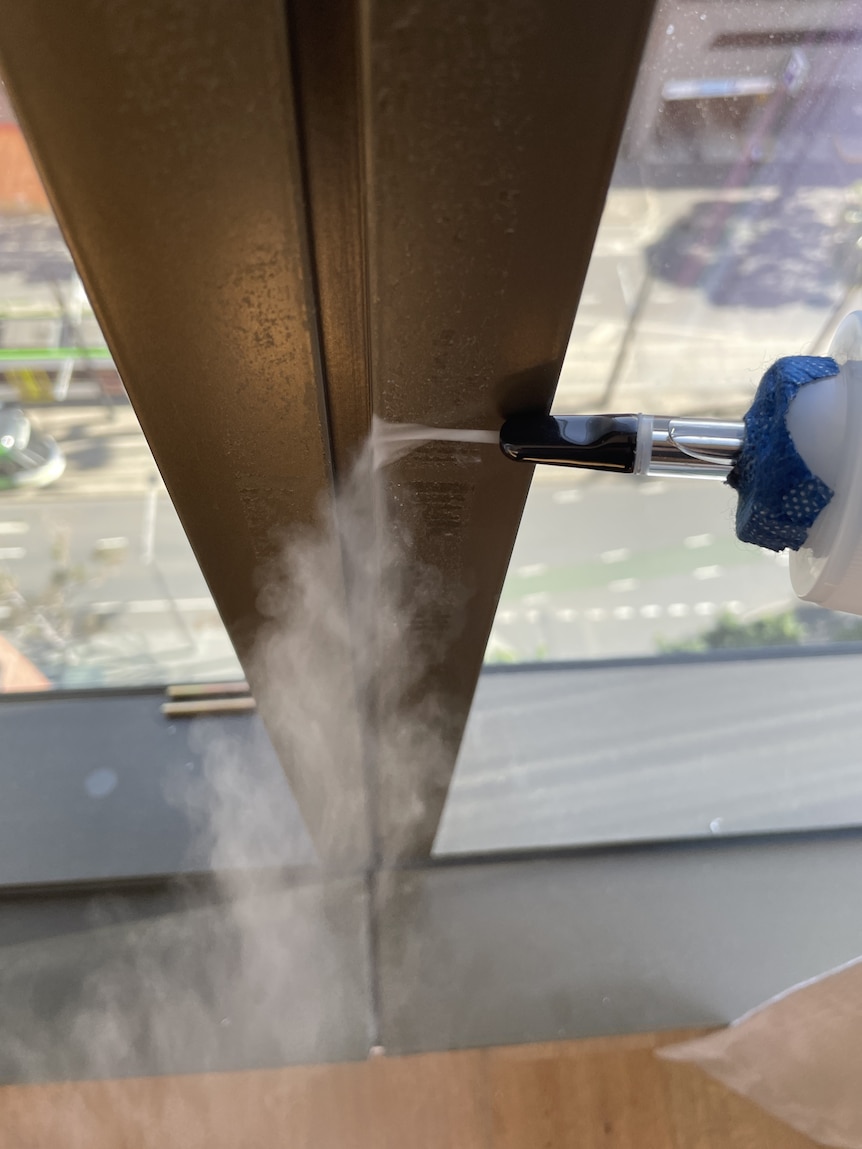In short:
New CSIRO research has found new homes and apartments are up to 50 per cent more airtight than those tested in 2015.
Poor air tightness can cause draughts and increase energy bills by up to 20 per cent.
What’s next?
The research has provided five recommendations for Australia’s building code to address common issues.
Australia has some of the least airtight homes in the world, and early mornings in old houses during winter can be particularly cruel.
Perhaps the heater takes too long to get going or the kettle takes that second too long to bring you a cup of warm relief.
For people living in newly built homes, it is not as much of a concern.
New research from the CSIRO shows new homes are up to 50 per cent more airtight than those tested in 2015.
However, older houses continue to cost Australians warmth and money.
“The single biggest cost we have is running our heating and cooling systems,” senior experimental scientist at CSIRO, Michael Ambrose, said.
“Airtightness is directly related to that.”
Mr Ambrose told ABC Victoria Mornings that a well-sealed house could halve the money spent on energy bills.
“Heating and cooling costs are about 40 per cent of your total energy bill, and fixing leaks can reduce that by 20 per cent,” he said.
What the research shows
In the most recent study, the CSIRO looked at 233 apartments and detached houses built across Melbourne, Sydney, Canberra, Brisbane, and Adelaide in the past four years.
The research excluded homes specially designed for air tightness.
It tested the air tightness of the properties and searched for the most common areas where heat would escape.
The researchers used a fan to create equal air pressure in each dwelling, before measuring the flow in and out of the home with specialist equipment.
While the research results were mostly positive and compared well to standards in other countries, such as the UK, the study found room for improvement.
Mr Ambrose said the research had led to several recommendations for the building code to ensure more efficient heating and cooling of homes.
“Leakages were found in most new homes, mainly from bathroom fans, sliding doors, and poor or missing door seals,” Mr Ambrose said.
“Some other homes, particularly apartments, were found to be extremely airtight, which can result in issues impacting building performance and resident health, if controlled ventilation is not included.
“Fortunately, there are simple and affordable ways to rectify these issues and preventative measures that can be implemented during construction.”
Overall, the study found a 65 per cent improvement in the airtightness of newly constructed dwellings in Australia, with new apartments being the best performing.
However, even two-thirds of the new homes tested had leaky bathroom fans, while sliding glass doors were an issue in both homes and apartments.
What can be done?
Mr Ambrose said the good news was two-fold.
Firstly, people buying new homes could be confident they were relatively airtight.
And for those in existing homes that were not as efficient, simple solutions were available with a DIY fix in most cases.
Mr Ambrose said hoods could be retrofitted to existing exhaust fans, or they could be swapped out for models with a “damper” that closes the fan when not in use to stop leakage.
He said sealants could be used to fill gaps in walls, and sealing strips could be fitted around doors and windows.
Even the classic door snake will help stop draughts under the door.
“There are always a few simple things we can do,” Mr Ambrose said.
“Some of the lesser known issues are, particularly in older homes, gaps where old appliances like washing machines or dishwashers with holes that need filling … might be leading into a wall cavity or subfloor.
“But overall, our research found that new Australian homes are performing better than ever before.”




